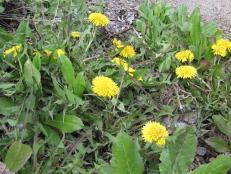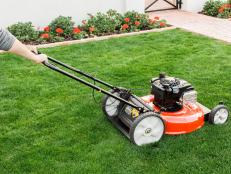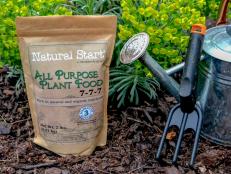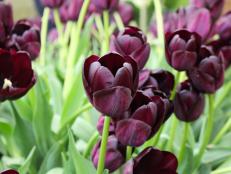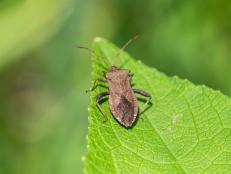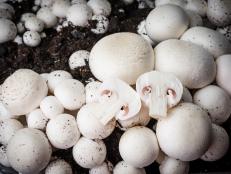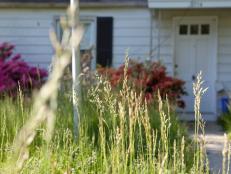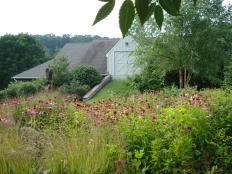What to Do About Mushrooms in the Lawn
Gardening and lawn expert Felder Rushing advises leaving them alone.
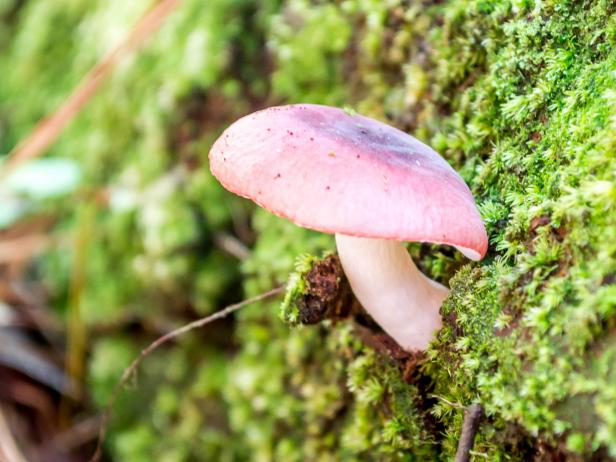
Debbie Wolfe

Mushrooms popping up in an otherwise manicured lawn can give gardeners fits. But while it’s natural to worry or at least wonder about these unusual growths, they look more alarming than they really are.
Fact: Most of the fungi that produce mushrooms do not cause lawn diseases—which is good, because truth is, there isn’t much we can do about them.
What Causes Mushrooms to Grow in Your Yard
While everyone can instantly recognize a typical umbrella-like toadstool, others are very bizarre. Slimy, finger-like stinkhorns smell bad in order to attract flies and other insects that spread their seed-like spores. Puff balls are round and when broken open release a cloud of spores. Birds nest mushrooms are usually found in groups and look very much like small nests with egg-like growths cupped inside. Often-colorful slime molds spread like thick jam.
When these plump, moist growths appear, they are actually the highlight of an already-existing underground party. These kind of fungi grow as very small, threadlike organisms called “hyphae” that grow from microscopic spores. Fungi crisscross in mats under the soil and over its surface consuming decaying organic debris such as fallen leaves and twigs, old grass clippings, animal waste, buried wood, old stumps, dead or dying tree roots, and anything else that is compostable. In fact, they are very important to garden health.
These beneficial organisms help decompose and recycle organic matter that otherwise would pile up and be an even worse problem. As fungi spread and work, they release pent-up nutrients and actually “feed” the soil and plants.
What we call mushrooms are actually the reproductive “fruiting bodies” of well-established fungi. When conditions are right—usually moist and cool—a happy fungus will shoot up its version of a seed-filled flower, to spread its spores by wind or via creatures that eat the growth. This is often the only visible portion of a fungus, and by the time we see them it is usually way too late to do anything about the fungus.
They aren’t a problem when out of sight in the woods or in a compost bin. But they can be upsetting to folks who find them going about their business in the middle of their well-tended lawn.
The Good News
Again, mushrooms in themselves don’t cause lawn diseases; they are merely the “flowers” of an existing fungus. They indicate a healthy lawn with lots of organic matter in the soil. As the underlying fungi break down this organic debris, they release plant nutrients, which can actually cause the lawn in the immediate area to be a richer, deeper green. In fact, a good lawn expert can “see” a hidden fungus by the curve of lush green growth it often causes (similar to how pet urine can “green up” spots in the lawn).
Unfortunately, sometimes the fungi hyphae can become so thick it prevents air and water from getting down to grass roots, causing the lush green to turn brown. When this happens in a circle or curve (caused by the fungus growing outward, like a slow-motion ripple on a pond), it is called a “fairy ring” because of the curve of mushrooms that appear in suitable conditions.
Because there's not a good control for fairy ring, about all we can do is plant new grass inside of the curve—and encourage it to follow the narrow fairy ring as it moves on. Sometimes watering or fertilizing the area a bit more can mask the symptoms. And aerating the area can at least temporarily help grass in the area to grow better.
Still, mushrooms are generally not troublesome to lawns, other than looks—which is a cosmetic attitude thing, not a horticultural problem to be solved.
What to Do About the Lawn Mushrooms
Because mushrooms are merely the above-ground symptoms of existing beneficial fungal growth, getting rid of them is a temporary fix at best. However, removing them quickly may prevent more spores from being released to spread more fungi.
Since many fungi and molds grow best in damp conditions, if you irrigate your lawn, consider reducing the frequency. Most healthy, deep-rooted lawns need only one good soaking every week or two at the most; watering more often actually causes several problems, including better fungal growth.
Remove excess thatch and aerate the soil to improve water penetration and air movement.
Apply nitrogen fertilizer as recommended for your lawn type to help the lawn grow better and to speed up the decomposition of grass and tree leaf clippings and other organic debris in the lawn.
Keep in mind that fungicides, which are used to keep lawn leaf spot and root rot diseases from spreading, do not actually kill fungi; they are used as temporary protective films to prevent more short-lived fungi from spreading quickly. They are of absolutely no use against the types of fungi that cause mushrooms, nor do they prevent mushroom growth. What well-trained professional turf managers do is simply remove the mushrooms as they appear, mostly for cosmetic purposes and to reduce spore dispersal.
So. Got mushrooms, puffballs, or other lawn oddities? Repeat this old adage: “If you can’t fix it, flee it or fight it…flow with it.”
Your choice is simple: Kick ‘em over, toss them out of sight…or learn to appreciate these colorful and bizarre symptoms of an otherwise generally healthy under-lawn ecosystem at work.
Don’t Graze on the Lawn
While it’s good to know that most of the fruiting bodies are not toxic, some are poisonous and can make children and curious pets very ill. Teach children the dangers of indiscriminate munching in the garden (including, by the way, unfamiliar berries). If you have a pet that’s likely to chew on odd things, it may be best to go out in the mornings and kick over or pick the tempting growths.
Still, in the case of accidental ingestion, it is important to identify what was eaten so physicians or veterinarians can make the best diagnosis. One of my favorite sites with good, well-labeled photos of common lawn and garden fungi is that of Americanmushrooms.com.






